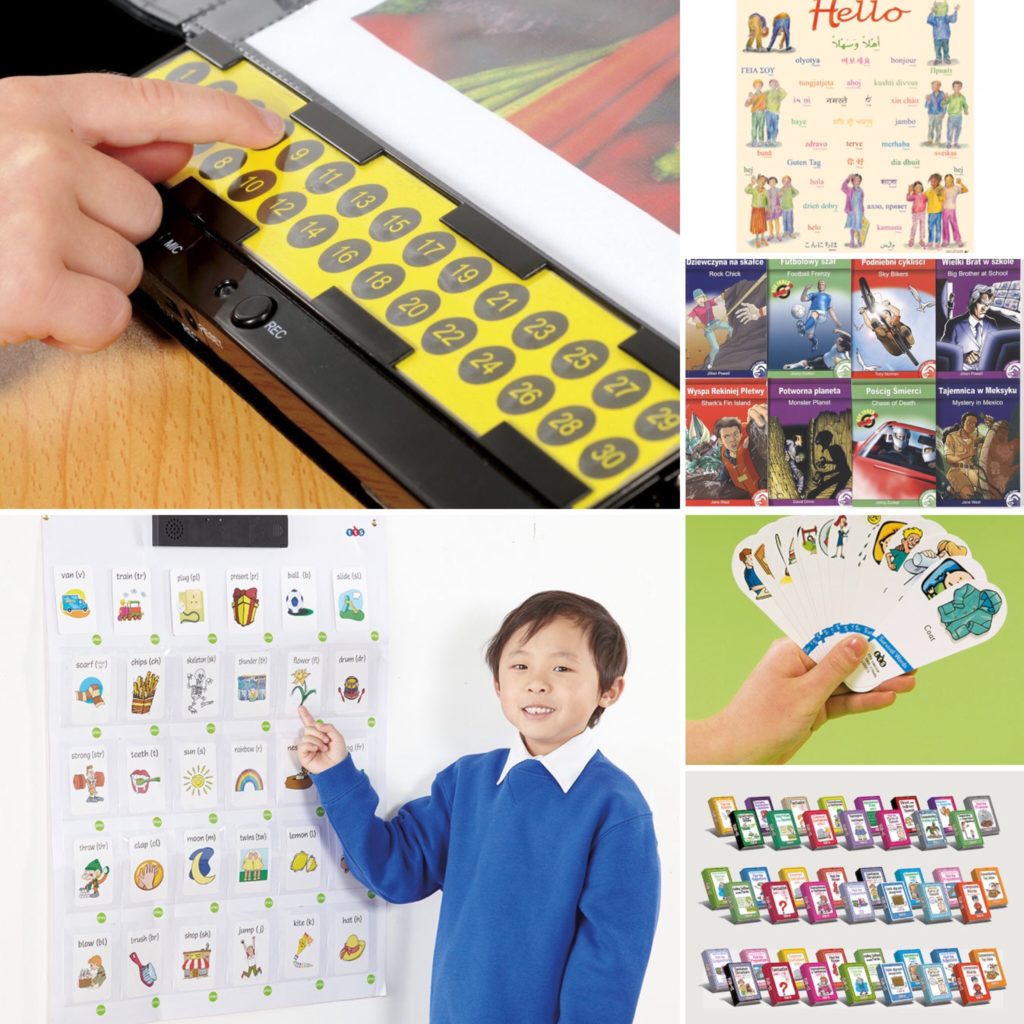The silent period
Children who have recently arrived may not be confident speaking English at first. This is sometimes referred to as their “silent period”; we do not want to put pressure on these children to speak when they don’t feel ready, but we can still support them in this very important stage in their language learning. They can develop their vocabulary and internalise structures through active listening activities.
When reading a story aloud to a class, all children enjoy repeating phrases, anticipating and using actions. Give your EAL children a little more time to develop their understanding. In smaller groups, get them to listen to a recording of it on an ipad as many times as they want. They can demonstrate their understanding by pointing to images or handling objects related to the story. Children may then want to repeat key phrases from the story. Support, from linguistically aware adults, can encourage this, so talk in English is generated without creating extra pressure for the child.
Scaffold interactions
In real life, most listening is face to face, and for EAL children it is vital that you scaffold interactions to support their understanding and foster their confidence. Drama activities are fantastic for developing the communication skills of all our children. Your “silent” EAL children will gain a lot from participating in freeze frames, and they can collaborate with other children in the lead up to performing them (possibly talking in their first language if you can group them in this way). Modelling and providing sentence stems with appropriate structures such as the start of questions will be part of your preparation for role-plays.
EAL children need time for oral rehearsal and will need explicit pre-teaching of key vocabulary. Other children are another vital resource. Make sure that they provide good models of the language features you want. Training the talk partners to support EAL learners is a good learning experience for them in a language-aware classroom.
With thanks to Paula Elenor for writing this post. Paula is an independent trainer and coach specialising in English, literacy and EAL (Secondary and Primary). For over 35, years she has had a varied career teaching secondary pupils and adults English, literacy and English as a Second Language . She has been a Head of English and a consultant with Birmingham L.A. Now living in York, she still keeps her connection with her home town, Birmingham. For over 5 years, she has been working closely with a group of primary schools in Birmingham supporting teachers with the teaching and assessment of reading and writing and the contextualised teaching of grammar. She is an experienced examiner of KS2 Reading and GCSE English Language, and is currently on Ofqual’s Panel of Experts.




